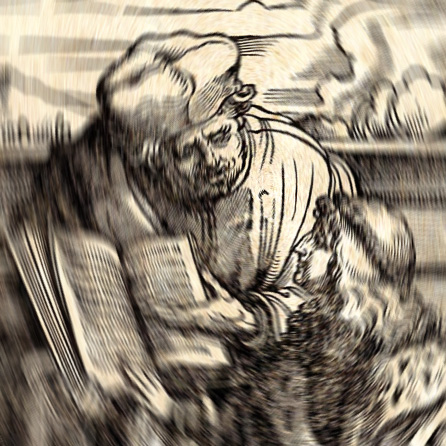September 29th, 2023
Postfeminist Design Theory: Rediscovering the Witch's Perspective
In the realm of design, a multifaceted theory unfolds, one that goes beyond mere aesthetics and form, delving into the profound social, cultural, and political dimensions of shaping. This approach to design theory resonates with the critical thinking of Silvia Federici, an eminent scholar who fervently critiques patriarchy and exploitation in her writings and activism.
Much like Federici analyzed the historical and contemporary oppression of women and the exploitation of labor, a design theory based on the ideas of Federici’s writing would mean to demand that we understand design as a domain of power and control. Design not only shapes products and environments but also influences our thinking, behaviors, and interactions. It can mirror and amplify societal hierarchies and power dynamics or reshape and challenge them.
In the spirit of Federici, a design theory could also illuminate the invisible labor behind the design process. It could bring into focus the often concealed work of designers, the ideological work of symbols and images, and the political work of design practices. This perspective urges us to scrutinize the stories embedded in designs and hold those who craft them accountable.
Federici’s feminist theories remind us that design is not a neutral activity but a tool for shaping identities and social realities. A design theory inspired by Federici should encourage us to become aware of how design influences power dynamics in our world and inspire us to view design as a means of liberation and societal transformation. It calls upon us to render visible the invisible labor within design and reflect on the societal repercussions of our design choices.
Postfeminist Design Theory: Rediscovering the Witch’s Perspective
Postfeminist design theory is an emerging field that challenges the boundaries of traditional gender roles and norms in design. One influential source of inspiration for this movement might be the feminist theorist Silvia Federici and her unique perspective on the subject of “witches.” Federici’s work has helped redirect the discourse on gender, power, and probably also design in new directions.
The witch hunts of the Middle Ages and early modern period have become a significant symbol of the oppression of women and non-conforming individuals in feminist theory. In her book “Caliban and the Witch: Women, the Body, and Primitive Accumulation” (2021), Silvia Federici analyzed these persecutions, demonstrating their close connection to the emergence of capitalism and the suppression of female power and autonomy.
In postfeminist design theory, Federici’s work serves as a catalyst to explore the role of the witch as a symbol of female empowerment and alternative forms of knowledge. This approach also challenges the traditional view of design, which is often shaped by male-dominated structures and ideas.
The Witch as a Symbol of Resistance
A Postfeminist design theory would argue that the witch can serve as a symbol of resistance and alternative ways of thinking and acting in design. Historically, witches were seen as a threat to established order because they practiced alternative healing methods, spirituality, and forms of knowledge. This threat to the existing order can be viewed as a way to question the prevailing structures in design.
Furthermore, the witch symbolizes a connection to nature and the environment, often overlooked in modern design practice. In an era where climate change and ecological sustainability are increasingly vital issues, the witch’s perspective opens up new possibilities for rethinking the relationship between design and nature.

Liberating the Female Body
Another essential aspect of postfeminist design theory inspired by Federici’s work would concern the liberation of the female body. Historically, the female body was often regarded as an object of control and oppression. Witch hunts were frequently associated with cruel bodily punishments and torture.
Postfeminist design theory should advocate for the reclamation of the female body in design. This not only involves representing female bodies in design projects but also acknowledging and appreciating the diversity of female bodies and identities. It is about freeing the female body from its historical suppression and celebrating it as a source of strength and self-determination in design.
Returning to Nature and Community
Another central aspect of the witch’s perspective in postfeminist design theory is the emphasis on community and nature. Witches often practiced within communities and had a close relationship with nature. This stands in contrast to the individualistic and consumption-oriented culture of “modern” design.
Postfeminist design theory shall call for a return to communal approaches in design, where people collaborate to find solutions that meet the community’s needs. It also emphasizes the importance of a sustainable relationship with nature and the integration of ecological principles into design.
Postfeminist design theory, inspired by Silvia Federici’s perspectives represents an exciting development in the world of design. It challenges traditional gender roles and norms, emphasizes the significance of the female body, nature, and community in design, and opens up new ways of thinking and acting. By using the witch as a symbol of resistance, empowerment, and alternative forms of knowledge, postfeminist design theory and practice shall contribute to making the field of design more diverse and inclusive.
References
Federici, Silvia (2021): Caliban and the Witch: Women, the Body and Primitive Accumulation. Penguin, London.
Download & Citation Info
Jensen, Edda (2023): Postfeminist Design Theory: Rediscovering the Witch's Perspective. DESIGNABILITIES Design Research Journal, (09) 2023. https://tinyurl.com/yh7h3hum ISSN 2511-627